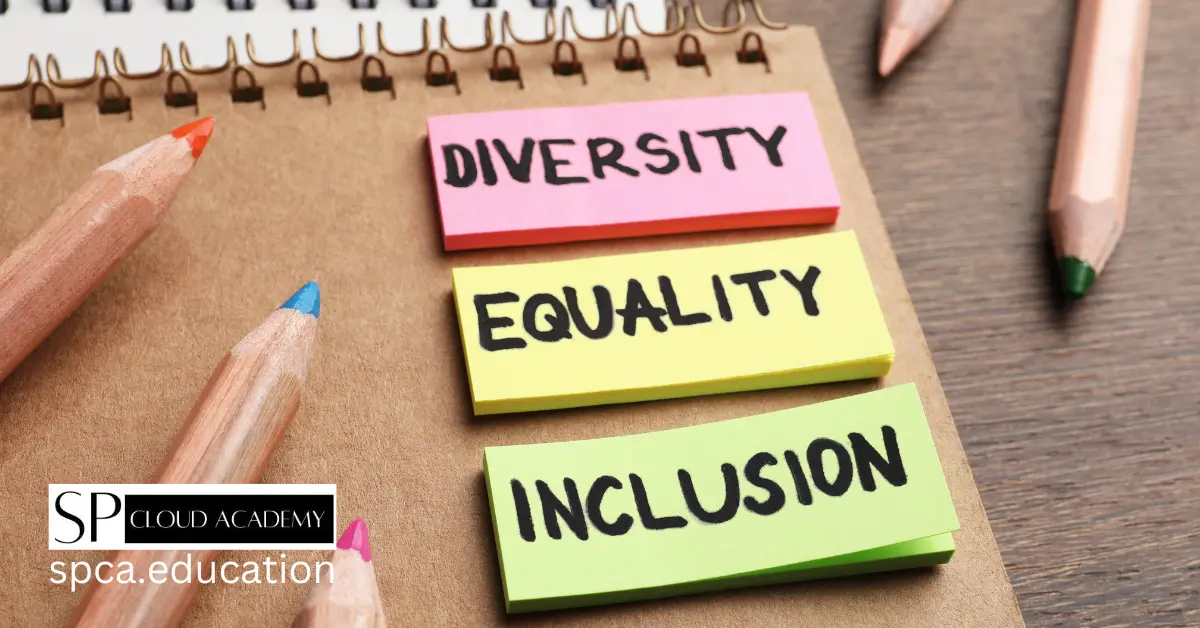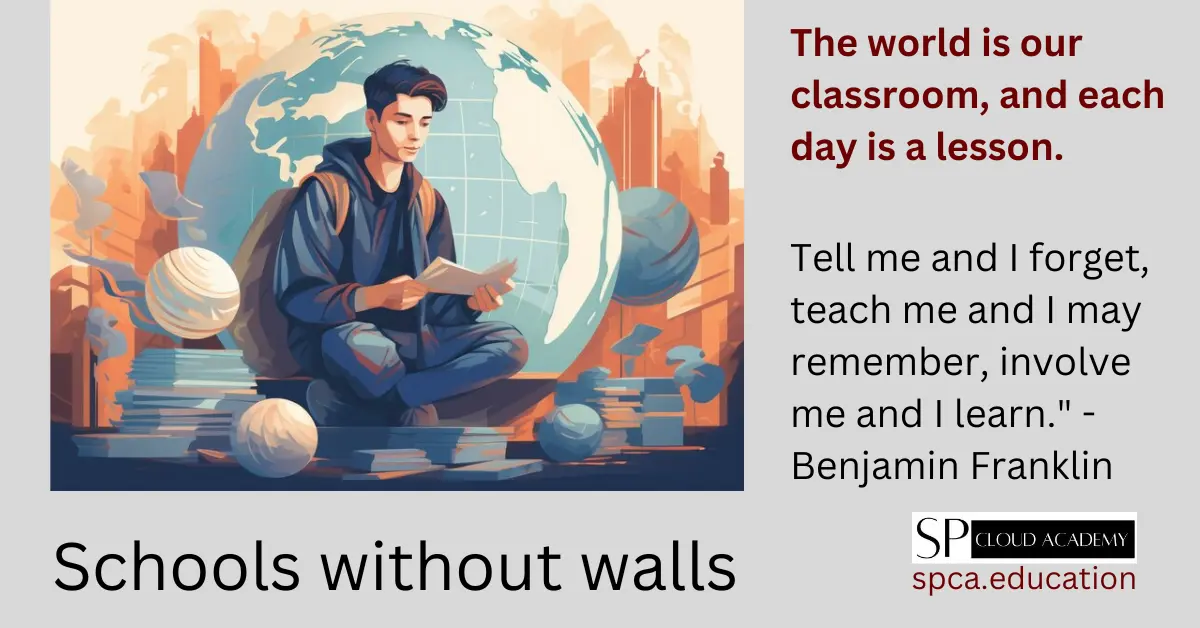In the traditional sense, schools have always been synonymous with physical buildings, classrooms, and structured schedules. However, a growing movement is challenging this notion by advocating for schools without walls. These innovative educational approaches prioritize flexibility, real-world experiences, and personalized learning opportunities. By breaking down the barriers of traditional education, schools without walls are paving the way for a more dynamic and effective learning environment.
The evolution of traditional education systems
For centuries, education has primarily been confined within the four walls of a classroom. Students would gather in designated spaces, listen to lectures, complete assignments, and take exams. While this model has served its purpose, it often fails to cater to the diverse needs and aspirations of students. However, with the advent of technology and the changing demands of the modern world, the limitations of traditional education have become increasingly apparent.
Advantages of schools without walls
Flexibility and personalized learning
One of the key advantages of schools without walls is the flexibility they offer. Students are no longer bound by rigid schedules and can learn at their own pace. This allows for personalized learning experiences tailored to individual strengths, weaknesses, and interests. Whether it’s through online courses, project-based learning, or self-directed study, students have the freedom to explore subjects in a way that suits their unique learning style.
Real-world experiences
Schools without walls prioritize real-world experiences as an integral part of the learning process. By taking learning outside the classroom, students are exposed to a variety of environments, perspectives, and challenges. This hands-on approach not only enhances understanding but also fosters problem-solving skills, critical thinking, and creativity. Whether it’s through internships, field trips, or community service projects, students gain valuable insights and develop a deeper connection with the world around them.
Enhanced creativity and critical thinking
Traditional education often focuses on rote memorization and standardized testing, leaving little room for creativity and critical thinking. Schools without walls encourage students to think outside the box and explore their own unique ideas and solutions. By embracing a more holistic approach to education, these schools foster creativity, innovation, and the ability to analyze and solve complex problems. This prepares students for the ever-changing demands of the modern workforce, where adaptability and creative thinking are highly valued.
Increased social interaction and community engagement
Contrary to popular belief, schools without walls do not isolate students from social interaction. In fact, they often provide more opportunities for students to engage with their peers and the community. Through collaborative projects, group discussions, and community-based initiatives, students develop essential social skills, empathy, and a sense of civic responsibility. By actively participating in their communities, students gain a deeper understanding of the world around them and become active contributors to positive change.
Addressing common concerns and misconceptions
As with any educational reform, schools without walls are not without their challenges and concerns. However, many of these concerns can be addressed through careful planning, collaboration, and a commitment to academic rigor and accountability.
Ensuring academic rigor and accountability
One common concern is that schools without walls may compromise academic rigor and accountability. Critics argue that without the structure of a traditional classroom, students may not receive the same level of instruction and supervision. However, schools without walls can address this concern by implementing rigorous curriculum standards, regular assessments, and accountability measures. By setting clear expectations and providing ongoing support, these schools can ensure that students receive a quality education aligned with academic standards.
Fostering socialization and peer relationships
Another concern is that schools without walls may hinder socialization and peer relationships. Critics argue that without the daily interaction of a traditional classroom, students may miss out on important social skills and friendships. However, schools without walls prioritize social interaction through collaborative projects, group discussions, and community engagement. By providing opportunities for students to connect with their peers, these schools foster meaningful relationships and a sense of belonging.
Overcoming logistical challenges
Logistical challenges, such as access to resources and support services, can also be a concern when implementing schools without walls. However, advancements in technology and increased community collaboration have made it easier to overcome these challenges. Schools can leverage digital resources, online platforms, and partnerships with community organizations to ensure that students have access to the necessary tools and support they need to succeed.
Successful examples of schools without walls
There are several successful examples of schools without walls that have embraced innovative approaches to education. These examples demonstrate the diverse ways in which schools can break free from traditional constraints and provide meaningful learning experiences.
Online schools and virtual classrooms
Online schools and virtual classrooms have gained popularity in recent years. These schools offer students the flexibility to learn from anywhere at any time. Through interactive online platforms, students can access a wide range of courses, collaborate with peers, and receive personalized instruction. Online schools provide a viable alternative for students who may face geographical or logistical barriers to traditional education.
Experiential learning programs and field trips
Experiential learning programs and field trips are another effective way to bring education beyond the classroom walls. These programs allow students to engage in hands-on activities, explore real-world environments, and interact with professionals in various fields. Whether it’s a science camp, an art workshop, or an outdoor adventure, these experiences provide valuable learning opportunities that cannot be replicated in a traditional classroom setting.
Homeschooling and unschooling approaches
Homeschooling and unschooling approaches are becoming increasingly popular among families seeking a more flexible and personalized education for their children. These approaches allow parents to take a more active role in their child’s education, tailoring the curriculum to their unique needs and interests. Homeschooling and unschooling provide the freedom to explore unconventional learning methods and prioritize the child’s individual growth and development.
Implementing schools without walls: Strategies and considerations
Implementing schools without walls requires careful planning, collaboration, and support from various stakeholders. Here are some strategies and considerations to help make the transition successful.
Collaboration with community partners and stakeholders
Schools without walls can benefit greatly from collaboration with community partners and stakeholders. By forming partnerships with local businesses, organizations, and experts in various fields, schools can provide students with valuable resources, mentorship opportunities, and real-world connections. These partnerships also help bridge the gap between education and the workforce, ensuring that students are prepared for the demands of the modern world.
Leveraging technology and digital resources
Technology plays a crucial role in schools without walls, enabling access to resources, communication, and personalized learning experiences. Schools can leverage digital platforms, online tools, and educational apps to create engaging and interactive learning environments. Additionally, technology can facilitate communication and collaboration among students, parents, and educators, fostering a sense of community and support.
Supporting educators and parents in the transition
Transitioning to a school without walls requires support and training for both educators and parents. Professional development opportunities can equip teachers with the skills and knowledge needed to create effective online or experiential learning environments. Similarly, parents can benefit from workshops and resources that guide them in facilitating their child’s education outside the traditional classroom. By providing ongoing support and collaboration, schools can ensure a smooth transition for all stakeholders involved.
Overcoming barriers and challenges in adopting schools without walls
While the benefits of schools without walls are evident, there are still barriers and challenges that need to be addressed in order to fully adopt these innovative approaches.
Resistance from traditional education systems
The traditional education system is deeply ingrained in our society, and change can often be met with resistance. Schools without walls challenge the status quo and require a shift in mindset, pedagogy, and infrastructure. Overcoming this resistance requires open dialogue, collaboration, and a focus on the shared goal of providing the best possible education for students. By highlighting the advantages and successes of schools without walls, traditional education systems can be encouraged to embrace change and adapt to the evolving needs of students.
Addressing equity and access concerns
One of the main concerns surrounding schools without walls is the potential for inequity and unequal access to resources. Not all students have equal access to technology, internet connectivity, or supportive home environments. To address these concerns, it is essential to ensure that all students have access to the necessary resources and support services. This may involve providing technology and internet access to underserved communities, offering scholarships or financial assistance to students in need, or implementing community-based initiatives to bridge the digital divide.
Navigating legal and regulatory frameworks
Schools without walls may also face legal and regulatory challenges, as they operate outside the traditional education model. It is important for schools to navigate these frameworks and ensure compliance with relevant laws and regulations. This may involve working closely with education authorities, seeking guidance from legal professionals, and advocating for policy changes that support and enable innovative educational approaches.
Future trends and possibilities for schools without walls
As schools without walls continue to gain traction, there are several exciting trends and possibilities on the horizon.
Blended learning models and hybrid approaches
Blended learning models, which combine online and in-person instruction, offer a promising future for schools without walls. These models provide the benefits of both traditional and digital learning, allowing for flexibility, personalization, and real-world experiences. By combining the best of both worlds, blended learning models can cater to the diverse needs and preferences of students while preparing them for the demands of the digital age.
Emerging technologies and immersive learning experiences
Advancements in technology, such as virtual reality (VR) and augmented reality (AR), hold great potential for schools without walls. These immersive technologies can transport students to different environments, erasing the boundaries of traditional classrooms. Whether it’s exploring ancient civilizations, conducting virtual science experiments, or collaborating with students from around the world, these technologies offer unique learning experiences that engage and inspire.
Global collaboration and cultural exchange opportunities
Schools without walls break down geographical barriers and open up opportunities for global collaboration and cultural exchange. Through online platforms and digital communication tools, students can connect with peers from different countries, learn about diverse cultures, and collaborate on projects that address global issues. This global perspective not only enhances learning but also fosters empathy, cultural awareness, and a sense of global citizenship.
Conclusion: Embracing the potential of schools without walls
Schools without walls are breaking barriers and redefining the educational landscape. By prioritizing flexibility, real-world experiences, and personalized learning, these innovative approaches are equipping students with the skills and knowledge they need to thrive in the modern world. While challenges and concerns exist, with careful planning, collaboration, and support, schools without walls can provide a transformative educational experience that prepares students for a future filled with limitless possibilities.
CTA:
To learn more about schools without walls and how they can benefit your child’s education, visit our website or contact us today. Embrace the potential of a new era in education and give your child the opportunity to thrive in a dynamic, personalized learning environment. Together, let’s break down the walls and unlock the true potential of education.
See Also
-

The Ultimate Guide to Brainstorming: How to Turn Any Idea into Gold
-

The Hidden Secrets Behind Motivation Theory: What Really Drives Human Behavior
-

Short and Smart or Long and Strong? Choosing Between Skill-Based and Professional Diplomas
-

What’s the Real Difference Between Science, Engineering, and Technology?
-

Equality or Equity? The Hidden Key to Truly Inclusive Classrooms
-

Equality vs. Equity: Why Treating Everyone the Same Isn’t Always Fair
